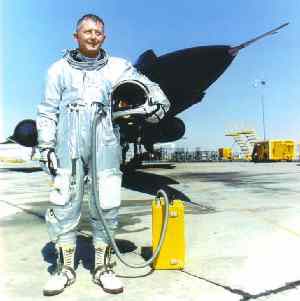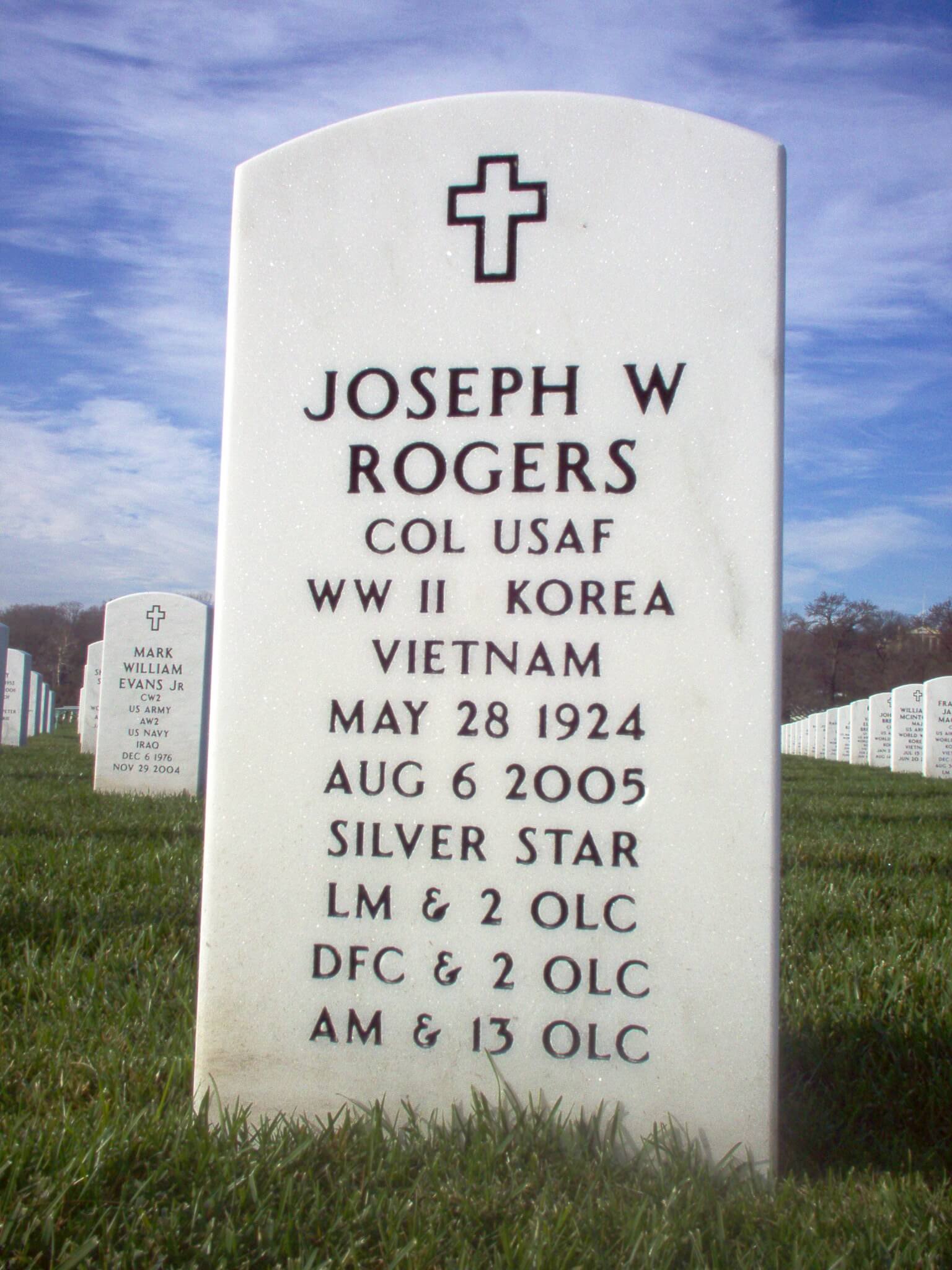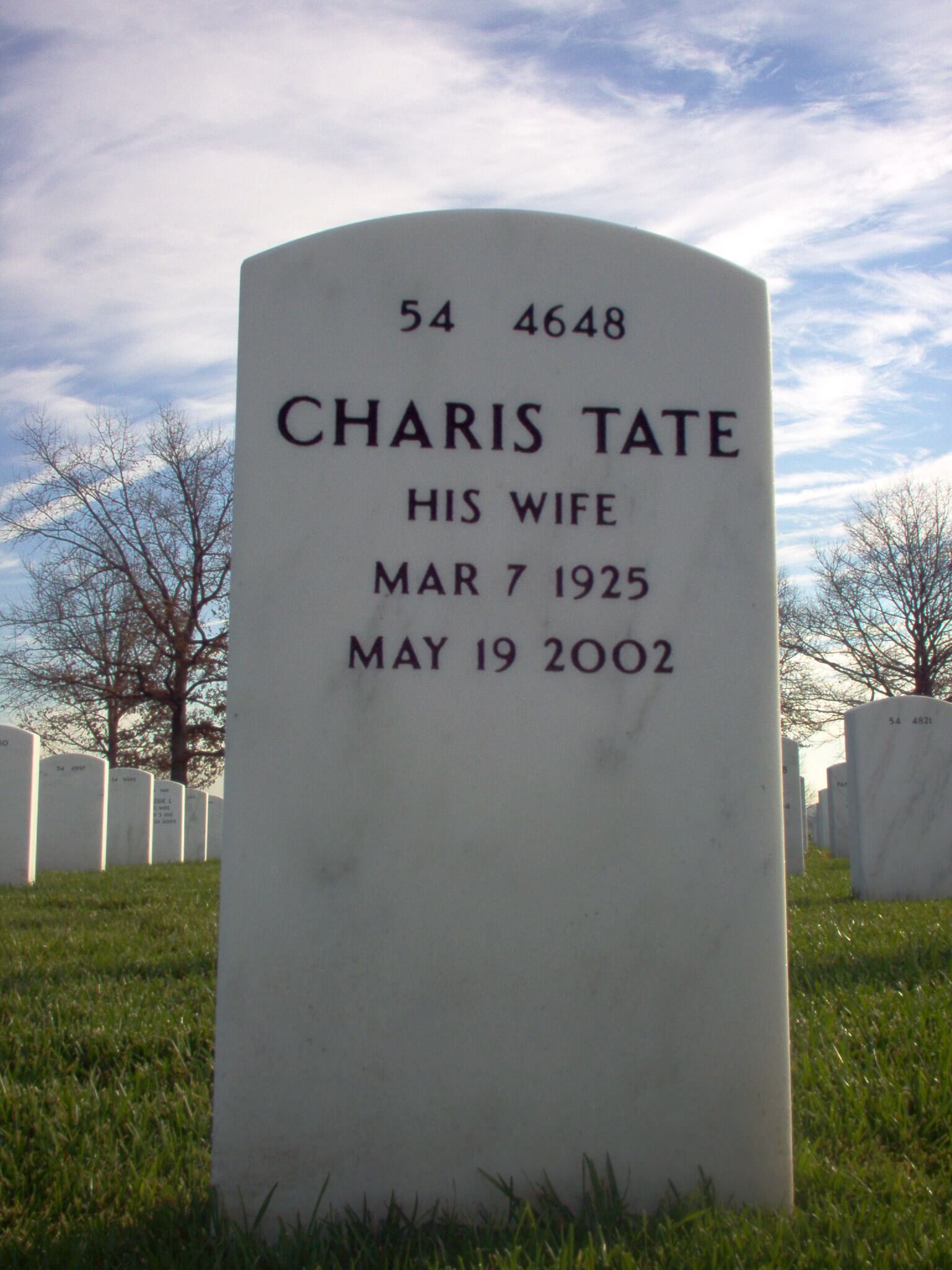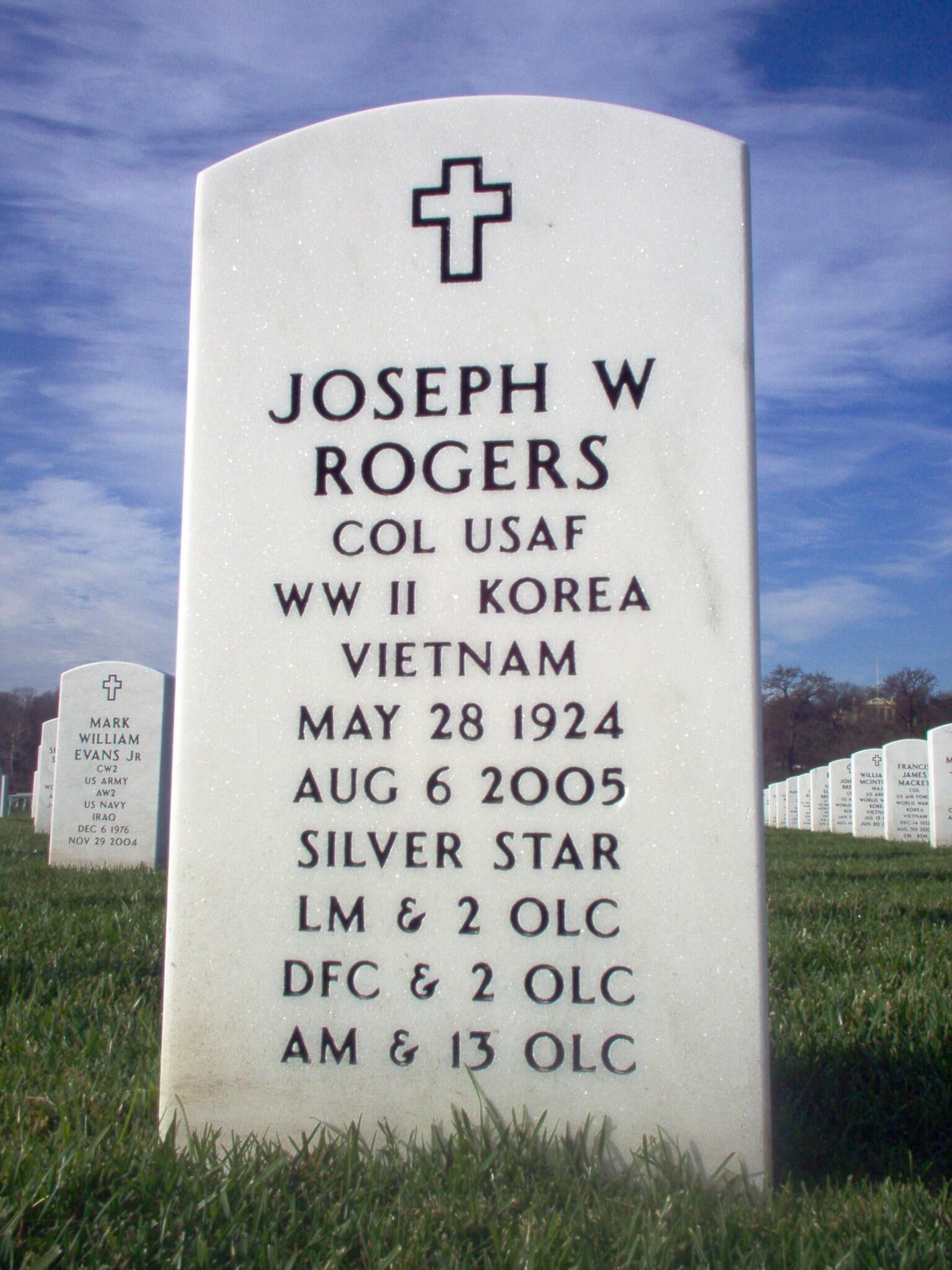COLONEL JOE ROGERS, USAF (Ret)
1959 WORLD SPEED RECORD HOLDER
COMBAT PILOT
YF-12A/SR-71 TEST PILOT

Born on May 28, 1924 in Chillicothe, Ohio, Joseph W. Rogers began his historic aviation career when he joined the Army Air Corps on May 23, 1943. After graduating Aviation Cadet Training Class 44H at Williams Army Air Field, Arizona, in 1944, Rogers served as an instructor pilot flying AT-6 Texan and BT-13 Valiant training aircraft at Minter and Merced AAF’s.
In 1946, Rogers received orders to join the 431st FBS of the 475th FBW based at Kempo, Korea to participate in United State’s effort to reinforce U.N. forces in that nation. On November 8, 1950, the then Capt. Rogers achieved a rare MiG-15 jet kill while flying in his piston-engine F-51D Mustang named Buckeye Blitz VI. After four years of combat in the F-51, Joe transitioned into the F-80 Shooting Star with the 36th Fighter-Bomber Squadron of the 8th Fighter-Bomber Wing. By the end of his involvement in the War, Rogers logged almost 200 missions in the Korean Theater.
Back on US soil, the newly appointed Major continued his flying career with the famous 71st Fighter Squadron flying F-86A Sabre. In 1954, Rogers entered F-86D Maintenance School and later USAF’s Test Pilots School, among the students in his class were future astronauts L. Gordon Cooper, Jr. and Virgil “Gus” Grissom. After graduation, Rogers joined the F-86D Test Program, and later the F-102A/B / F-106A/B Interceptor Development Programs. During his next assignment as Project Officer for F-106 integration at Air Defense Command Headquarters, Joe was chosen for a project that changed his life.
After the Air Forces selection of the F-106 Delta Dart to make the Services latest attempt at the Absolute Speed Record, there was no question who would pilot the aircraft in this joint USAF / Convair project, Maj. Joe Rogers. On December 15, 1959, the Major became the fastest Jet Pilot in the World after flying F-106A # 56-0467 to an average speed of 1525.95 mph. F-106 # -0467 flew the record flight after F-106A # 56-0459 experienced technical problems throughout the project. On its last flight in Firewall # -0459 became uncontrollable, fortunately Rogers was able to “settle her down” and land the aircraft. In honor of his skillful airmanship demonstrated during the “Firewall Project” Rogers received worldwide recognition and was presented the Distinguished Flying Cross, The DeLavaulx Medal, and the 25th recipient of the Thompson Trophy, an award that can be traced back to the National Air Races in 1929.
In 1960, Lieutenant Colonel Rogers took command of the Air Force’s largest Fighter Squadron, the 317th Fighter-Interceptor Squadron formerly based at McChord AFB, now headquartered at Elmendorf AFB, AK. Joe proved to be one of the Squadrons best Pilots flying in the F-102 Delta Dagger, this fact confirmed after winning the USAF’s Air to Air Weapons Meet, “Top Gun” award in 1963. The Fighter meet named William Tell is a competition that pits the best Fighter-Interceptor aircrews from around the Air Force.
After a four year command of the 317th FIS, Joe was lured back to flight testing when he took command of the SR-71A / F-12A Test Force. On December 18, 1969, Joe cheated death once again. While flying a test mission with SR-71A # 64-17953, Colonel Rogers and his RSO, Lieutenant Colonel Gary Heidelbaugh experienced an in-flight explosion causing a very dangerous high-speed pitch up. Unable to regain control of the aircraft, both men were forced to eject from the aircraft.
In 1973, Joe was thrust back into combat in the skies of Asia as the Vice Commander of the 3rd Fighter Wing in South Vietnam. He flew more than 40 missions, most of them in the A-37 Dragonfly and the F-4 Phantom II. Later, Rogers served as Asst. Deputy Commander of the 7th and the 13th Air Forces in Vietnam.
In February 1975, during his final assignment as Chief of Staff for Operations at Aerospace Defense Headquarters, Joe Rogers retired from the Air Force after a 29 year career. After retirement Joe signed on with Northrop Aerospace, where he worked in the companies Fighter Division, Asian-Pacific Region, marketing F-5 Tiger & F-20 Tigershark fighter aircraft. Rogers retired after 13 years, but is still providing his valuable aviation knowledge to the company as a consultant.
Colonel Joe Rogers died peacefully in his home on 6 August 2005.
Colonel Joseph Rogers, record-setting pilot
By Myrna Oliver
Courtesy of the Los Angeles Times
August 14, 2005
LOS ANGELES — Colonel Joseph ”Whistlin’ Joe” Rogers, a fighter pilot in three wars who retains the world record for flying the fastest single-engine jet, has died. He was 81. Colonel Rogers died August 6, 2006, of congestive heart failure at his Northern California ranch near Healdsburg, California.
As an Air Force test pilot, then-Major Rogers broke a Soviet speed record in 1959 when he flew an F-106 Delta Dart at 1,525.95 miles per hour over Edwards Air Force Base. The record, verified by national and international aeronautics agencies, has never been broken.
”Rogers was required to make two runs — one in each direction to offset winds — and his speed was an average of both runs over an 18-kilometer track,” former space and aviation editor Marvin Miles wrote in the Los Angeles Times.
Rogers flew at 1,515.45 miles per hour on his west-east run and 1,536.46 miles per hour on his east-west run, Miles wrote.
Colonel Rogers chose the altitude — 40,000 feet — but had to maintain it with less than a 150-foot variation.
”Convair’s Delta Dart,” Miles wrote, ”is a working interceptor with the North American Air Defense Command, charged with stopping enemy bomber attacks at any time, day or night, in any kind of weather.”
Colonel Rogers, who earned a Distinguished Flying Cross for his record-setting run, was instrumental in helping bring his plane to the Pacific Coast Air Museum at the Charles M. Schulz-Sonoma County Airport in Santa Rosa, California.
General John P. Jumper, Air Force Chief of Staff, who attended the dedication of the restored plane as a museum exhibit last year, credited Colonel Rogers with getting him hooked on flying. Jumper, the son of the late Major General Jimmy J. Jumper, said that as a child he sat on Colonel Rogers’s lap while the test pilot taxied him around an airfield in a P-51 Mustang.
”Colonel Joe Rogers was one of our heroes that grew up in the early days of our Air Force with the likes of Chuck Yeager [the test pilot who first broke the sound barrier] and other aviation pioneers,” Jumper told the Santa Rosa Press Democrat after Colonel Rogers’s death.
”The Air Force and the nation owe him and his generation a great debt of gratitude,” Jumper said.
Colonel Rogers grew up on a farm near Chillicothe, Ohio, dreaming of flying. At 17, he joined the Army Air Forces and climbed into an airplane for the first time. To his disappointment, his assignment during World War II was teaching other men how to fly fighter planes.
During the Korean War he more than made up for his lack of combat, flying 170 missions in a P-51 Mustang, a piston-engine plane in which he shot down a Soviet MIG jet.
In Korea, Colonel Rogers earned his nickname ”Whistlin’ Joe” when he attached a whistle to one of his wings to scare enemy ground troops as he came in for a strafing run.
A hero well before he set the single-engine jet speed record, Colonel Rogers was one of a dozen or so American fighting men Time magazine designated collectively as Man of the Year for 1950.
As a test pilot, he flew the SR-71 Blackbird spy plane, among many others. He narrowly escaped death in 1969 when his SR-71A suffered an in-flight explosion and he and his reconnaissance systems officer parachuted to safety near Shoshone, east of Death Valley.
Colonel Rogers, who earned the Air Force’s Top Gun award in 1963 in an air-to-air weapons contest, returned to combat during the Vietnam War. As vice commander of a fighter wing, he flew 100 more missions.
After retiring from the Air Force in 1975, Colonel Rogers spent 14 years selling planes in Asia for Northrop Aerospace Cmpany.
In 1989, he moved with his late wife, Charis, to Healdsburg, California, to raise water buffalo.
Colonel Rogers leaves sons Joe Jr. and Garrett; daughter Georgia Carver; two grandchildren; and two great-grandchildren.
ROGERS, JOSEPH W JR
COL US AIR FORCE
WORLD WAR II, KOREA, VIETNAM
- DATE OF BIRTH: 05/28/1924
- DATE OF DEATH: 08/06/2005
- BURIED AT: SECTION 54 SITE 4648
ARLINGTON NATIONAL CEMETERY
Michael Robert Patterson was born in Arlington and is the son of a former officer of the US Army. So it was no wonder that sooner or later his interests drew him to American history and especially to American military history. Many of his articles can be found on renowned portals like the New York Times, Washingtonpost or Wikipedia.
Reviewed by: Michael Howard



